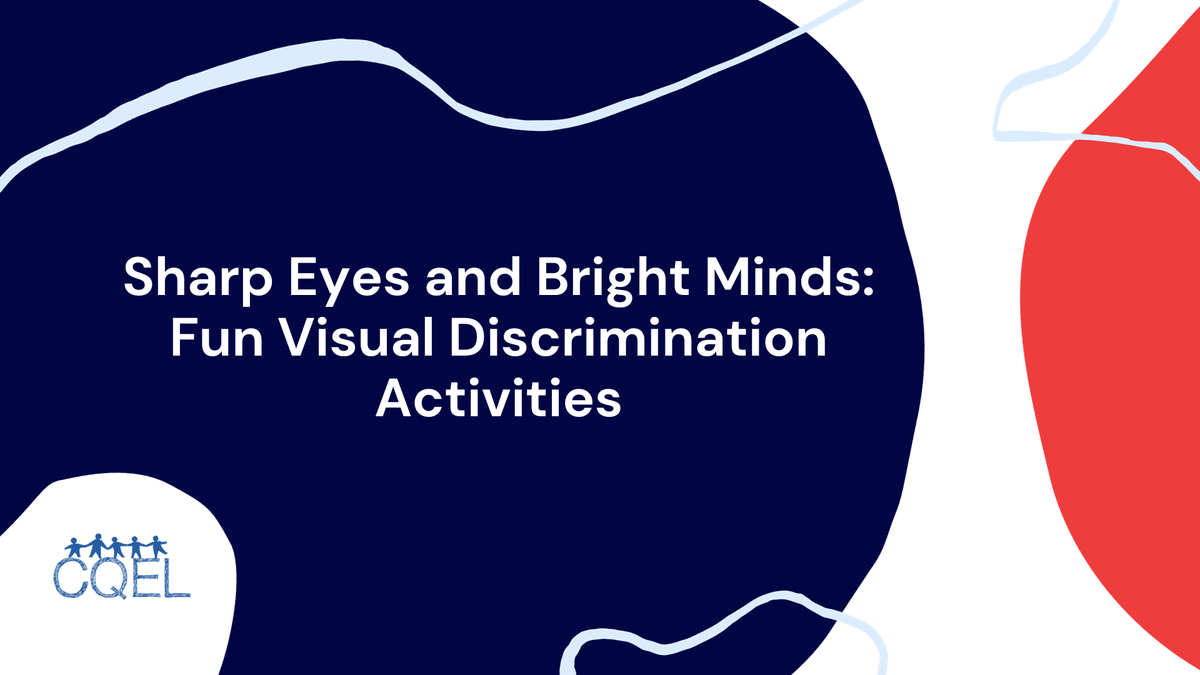Sharp Eyes and Bright Minds: Fun Visual Discrimination Activities
Beneath this playful surface lies a crucial cognitive skill – visual discrimination – the ability to perceive and understand differences between visual stimuli.

The world is a vibrant canvas for preschoolers, bursting with color, shape, and endless possibility. But beneath this playful surface lies a crucial cognitive skill – visual discrimination – the ability to perceive and understand differences between visual stimuli. This foundational skill nourishes the development of reading, writing, math, and even problem-solving. So, how can we, dedicated childcare providers, transform learning into a joyful adventure that strengthens visual discrimination? Let's dive into a world of playful activities and watch those little minds blossom!
Matching Masters:
- Memory Mania: Hide pairs of vibrantly illustrated cards depicting familiar scenes (animals, vehicles, everyday objects) face down. Transform playtime into a treasure hunt as children flip cards, searching for matching pairs. The child with the most memories wins!
- Sorting Spree: Gather an array of colorful buttons, smooth pebbles, and textured pinecones – natural treasures from around the world. Encourage children to sort these treasures based on color, size, or texture, creating their own miniature landscapes.
- Bingo Bonanza: Craft bingo cards featuring a variety of symbols (fruits, animals, letters). Call out the items, and let children mark their cards with counters or small toys. The first to complete a row or column becomes a bingo champion!
Sensory Detectives:
- Playdough Puzzles: Cut out playful shapes inspired by everyday objects (stars, houses, animals) from colorful playdough. Encourage children to match the shapes on their board to the playdough pieces, building their own edible models.
- Texture Treasure Hunt: Hide objects with distinct textures (sandpaper leaves, fluffy clouds made of cotton balls) around the classroom. Blindfold children and guide them on a sensory journey, challenging them to identify objects based solely on touch, like true explorers.
- Smell and Tell: Place small containers filled with familiar aromas (citrus fruits, fresh bread, coffee) around the room. Blindfold children and ask them to identify the scents, igniting their olfactory senses and transporting them to different corners of the world.
Creative Champions:
- Spot the Difference: Show children two similar pictures of everyday scenes (playground with or without swings, garden with or without flowers). Challenge them to be eagle-eyed detectives and identify the subtle differences, fostering critical thinking and observation skills.
- Pattern Builders: Use colorful blocks or beads to create a simple pattern inspired by nature (flower petals, bird feathers). Ask children to continue the pattern, adding their own creative touch and extending their understanding of visual sequences.
- Drawing Duplicates: Sketch a simple object (butterfly, tree) on a piece of paper. Encourage children to copy the drawing as accurately as possible, honing their fine motor skills and attention to detail. Remember, the beauty is in the details!
By weaving these playful activities into your childcare program, you're not just building visual discrimination skills – you're nurturing curious minds and fostering a love for learning. So, let the sunshine of exploration illuminate your classrooms, and watch as your little world citizens blossom into sharp-eyed, bright-minded explorers, ready to conquer the world, one vibrant memory at a time.
Bonus Tips:
- Sing songs and chant rhymes that focus on different colors, shapes, and sizes.
- Read books with captivating illustrations that showcase the diverse world around us.
- Play hide-and-seek games, asking children to describe the object they're looking for using visual cues, like color or shape.
Remember:
- Keep it fun and engaging! Short, playful activities are key to capturing preschooler attention.
- Start simple, then climb the complexity mountain! Begin with basic tasks and gradually increase difficulty as their skills grow.
- Turn everyday objects into learning treasures! Common household items can be transformed into captivating tools for visual exploration.
- Celebrate every success! Positive reinforcement fuels motivation and keeps them eager to learn and explore.
Let's transform classrooms into vibrant sensory playgrounds where every color, shape, and texture becomes a building block for young minds. Remember, the key to unlocking their potential lies in making learning fun, engaging, and full of wonder!
